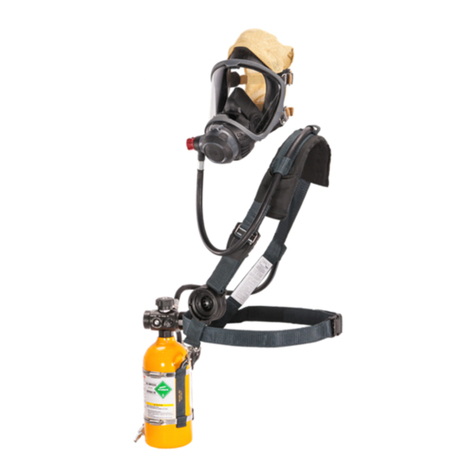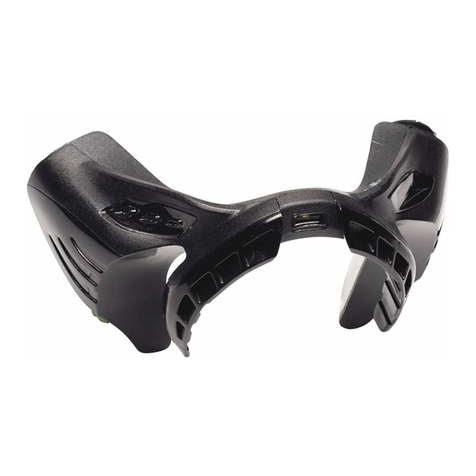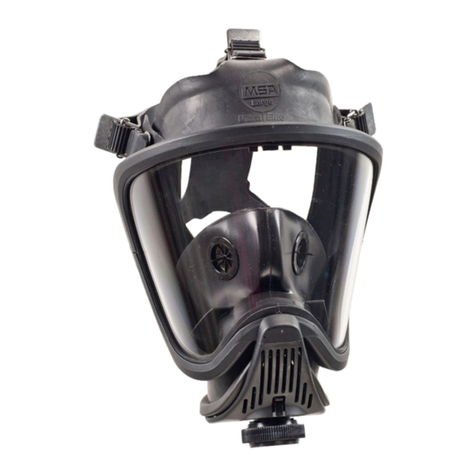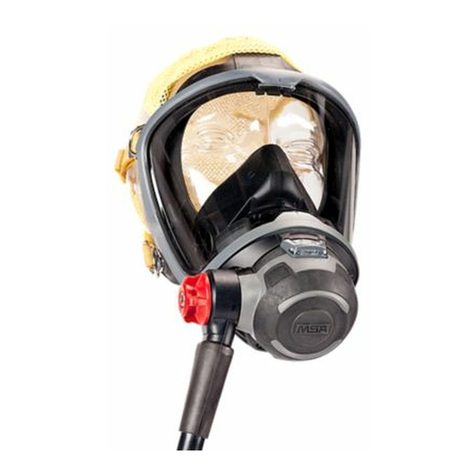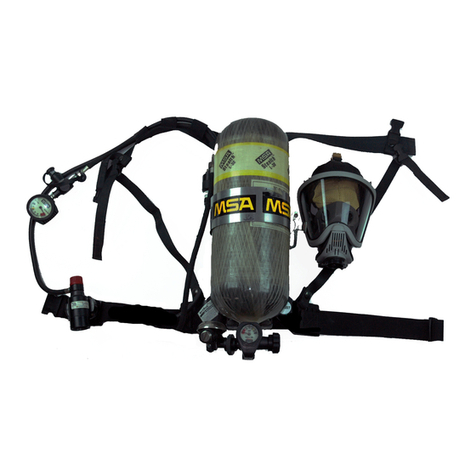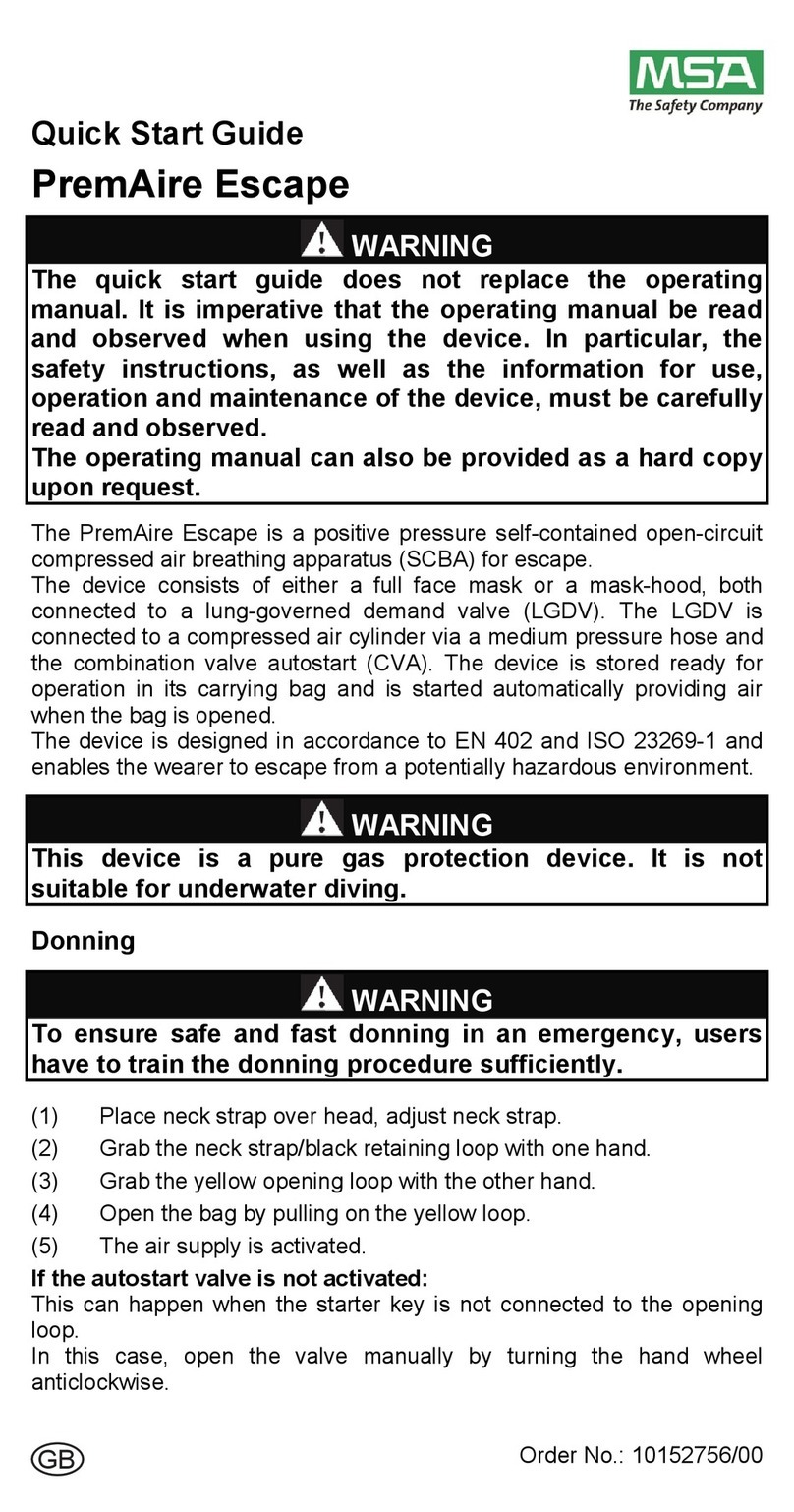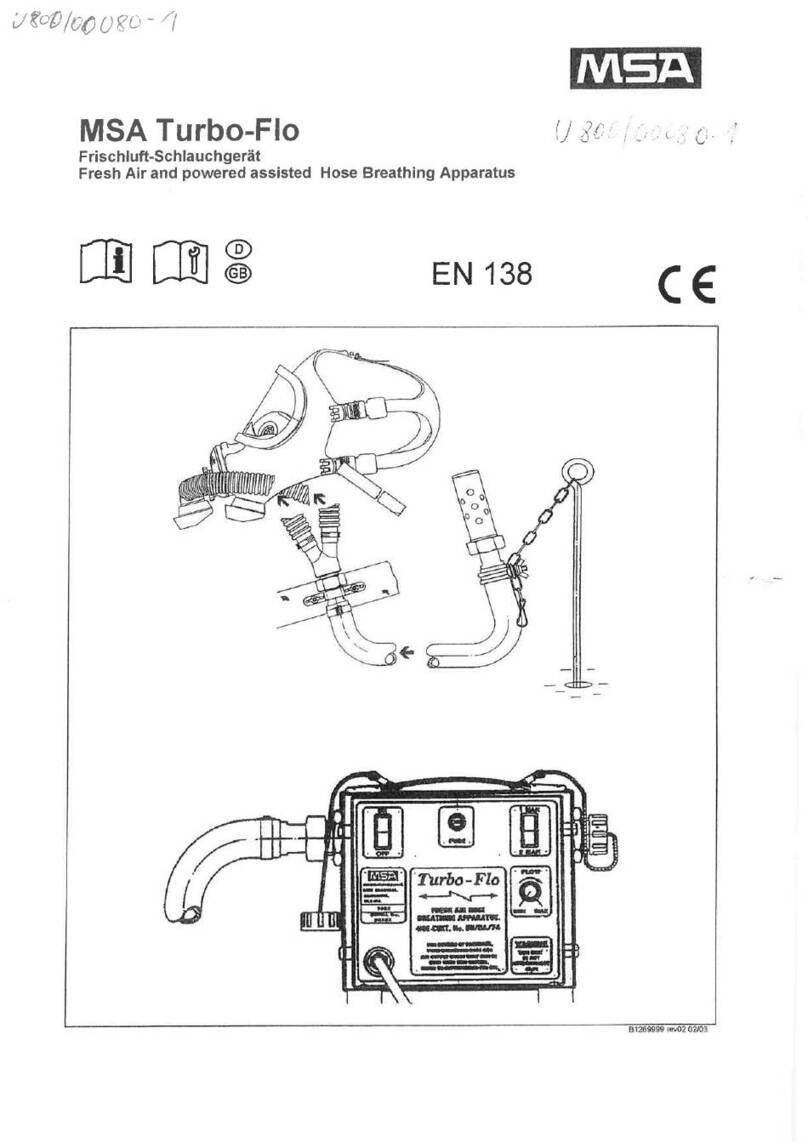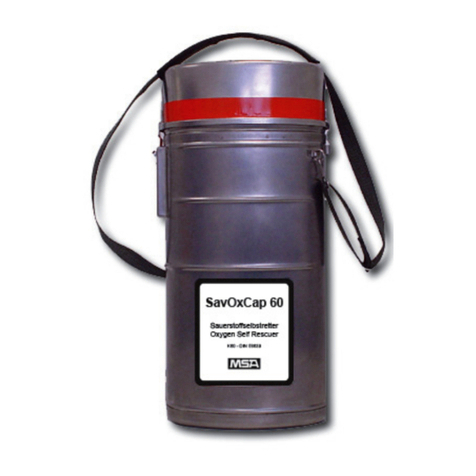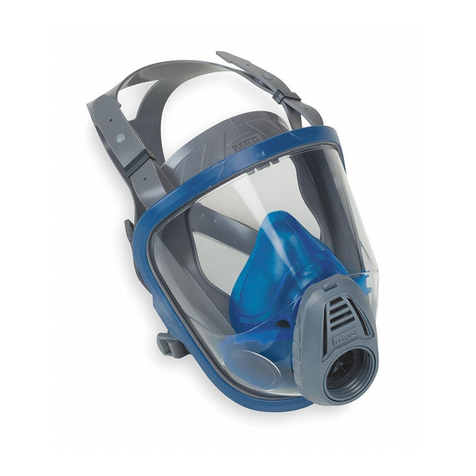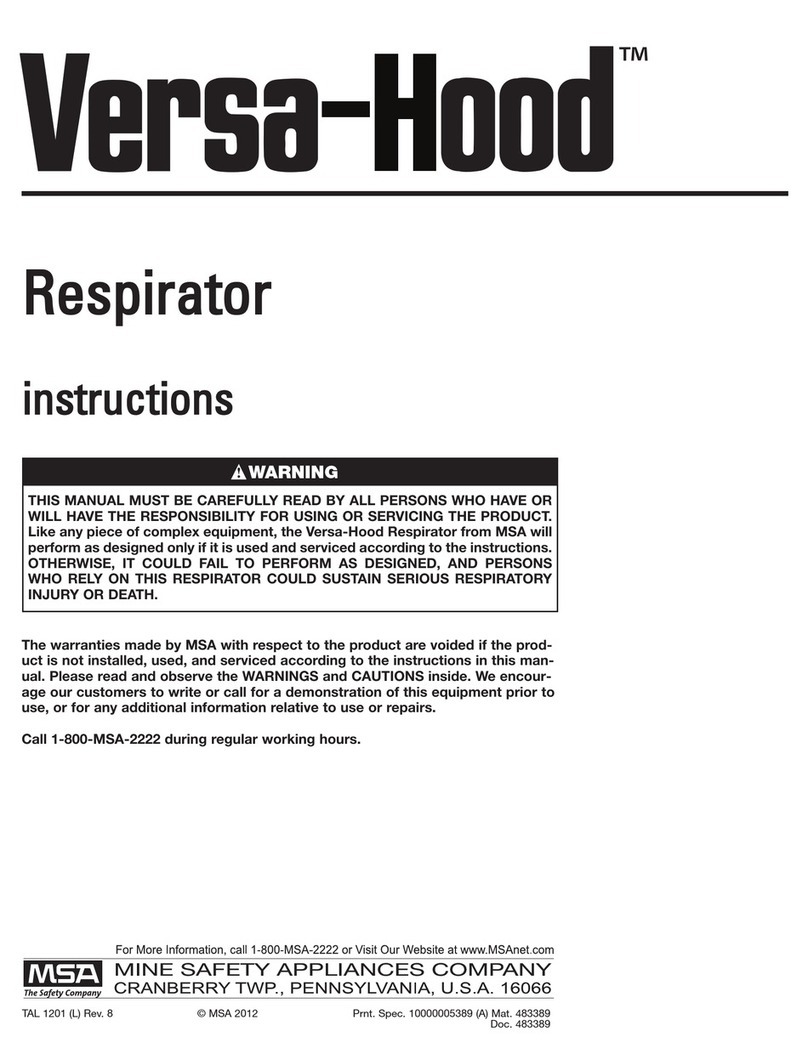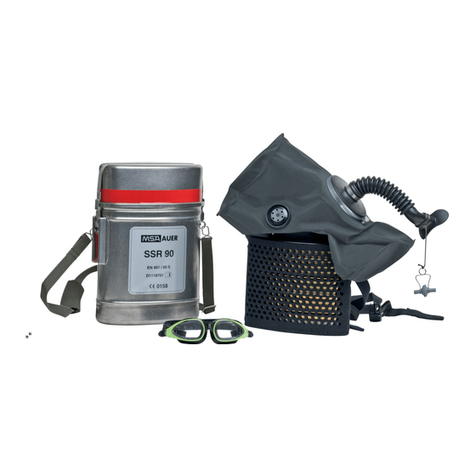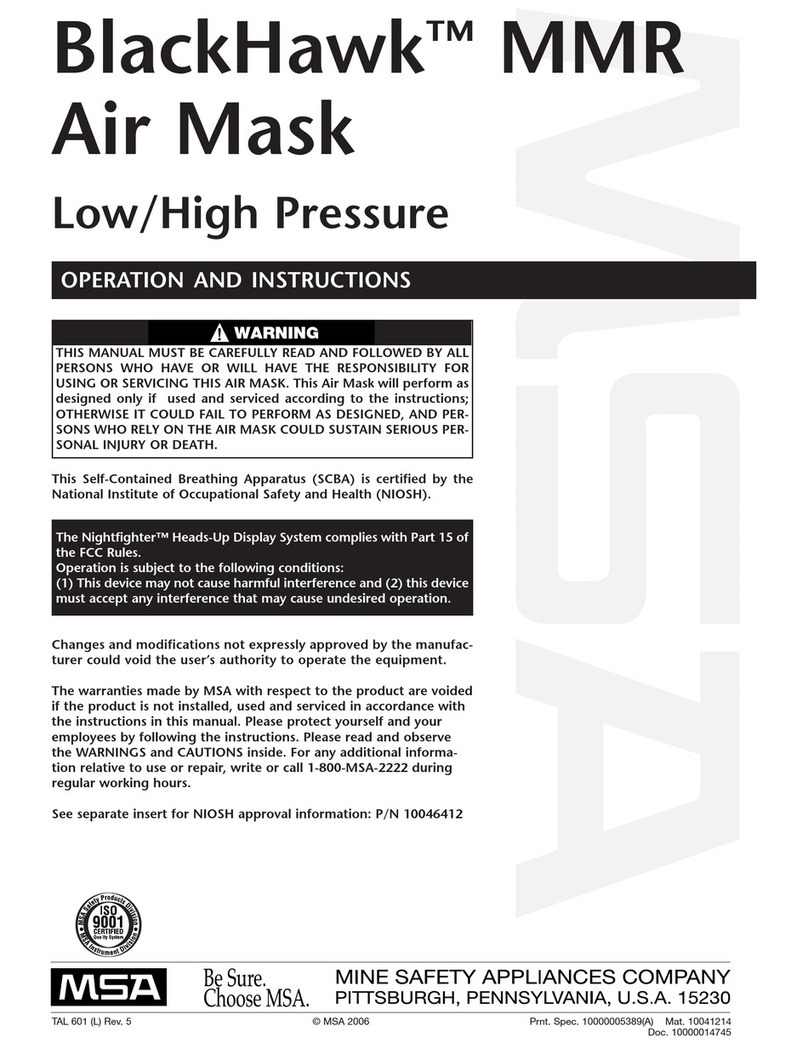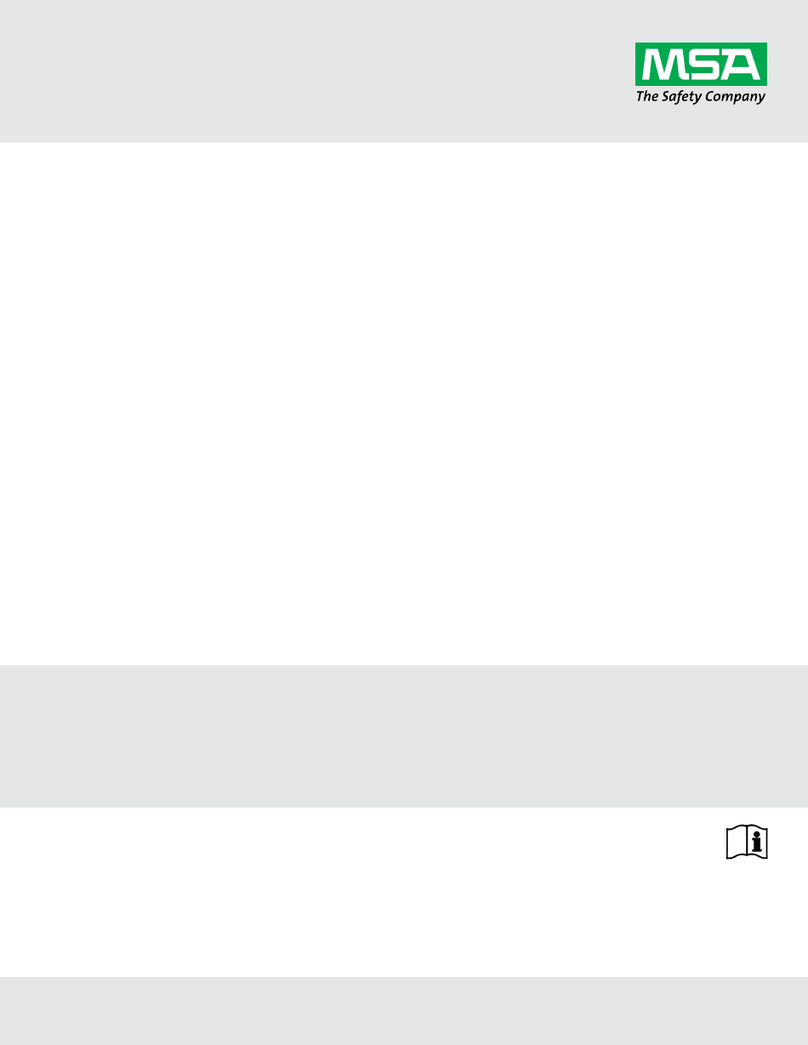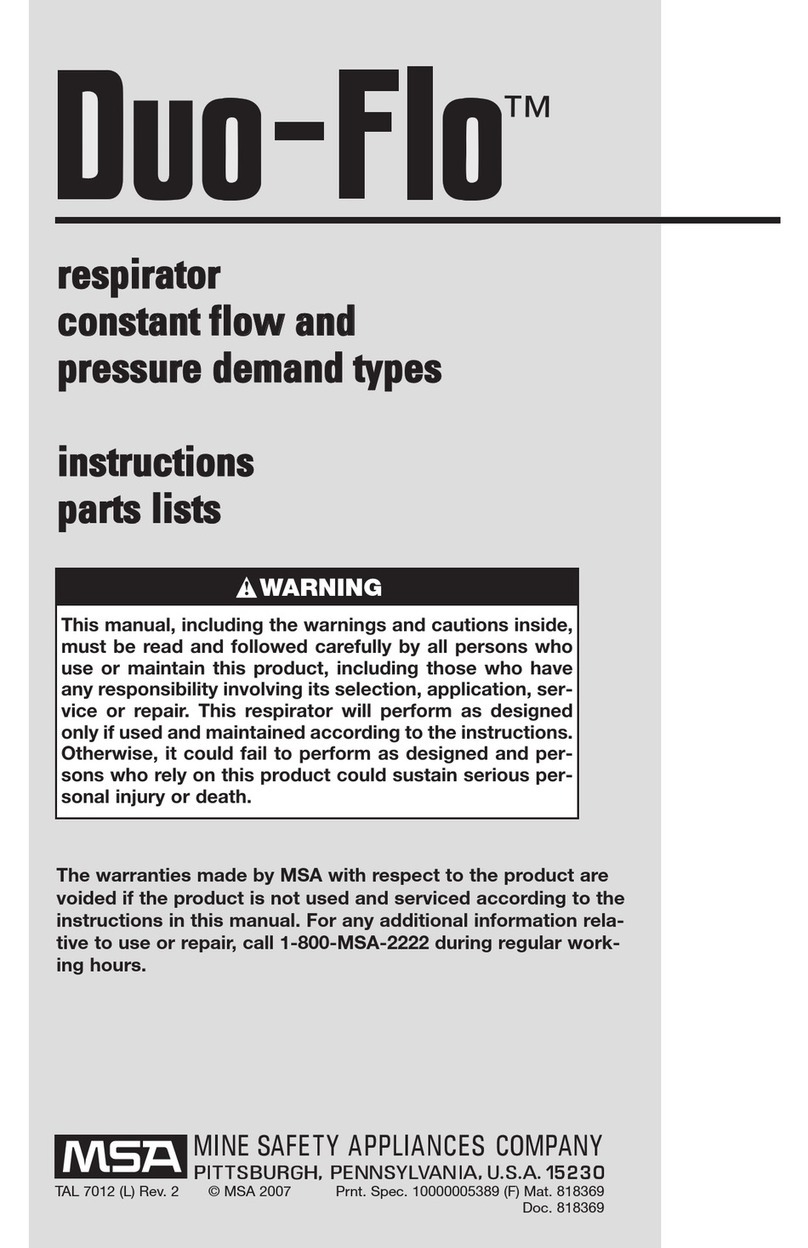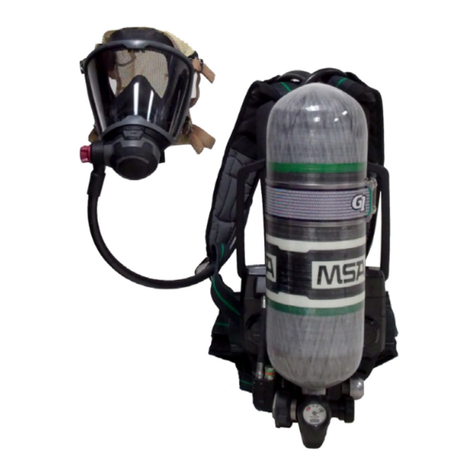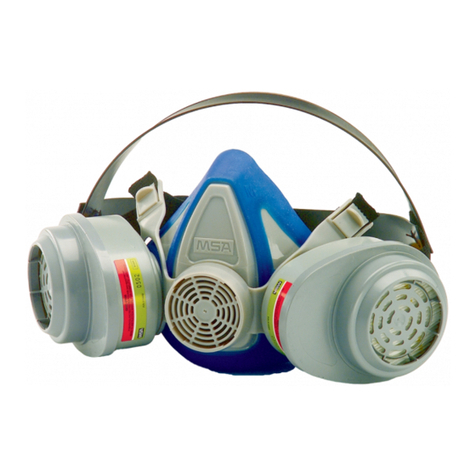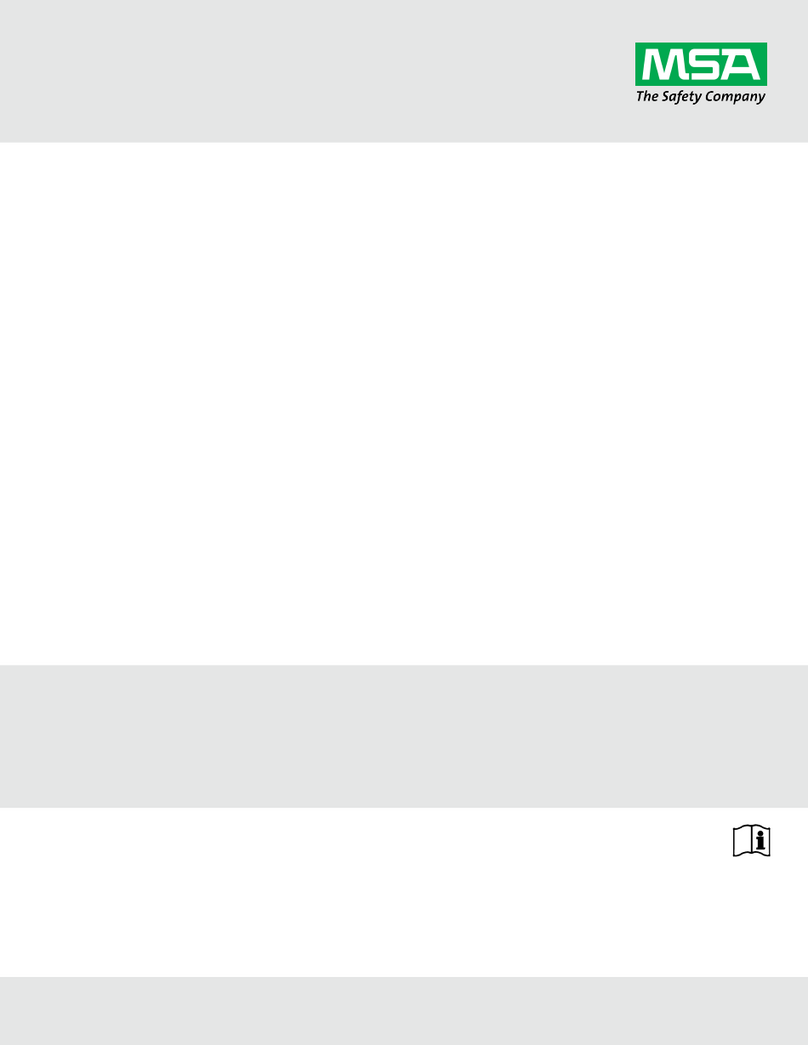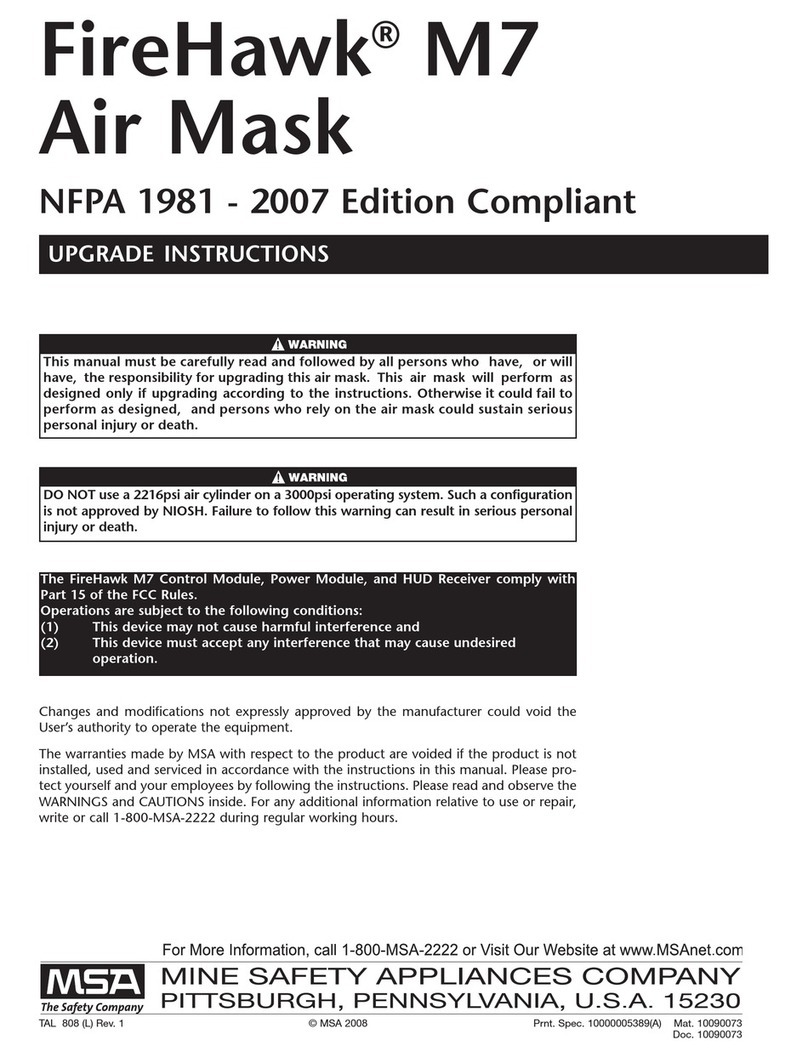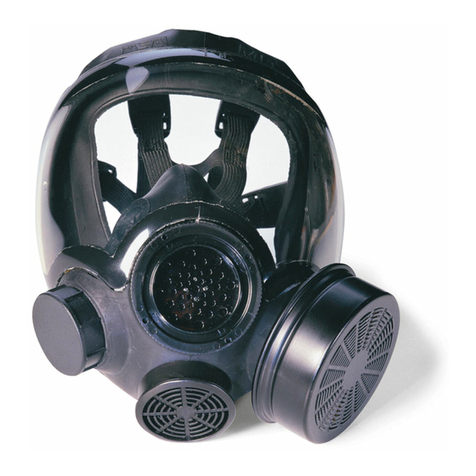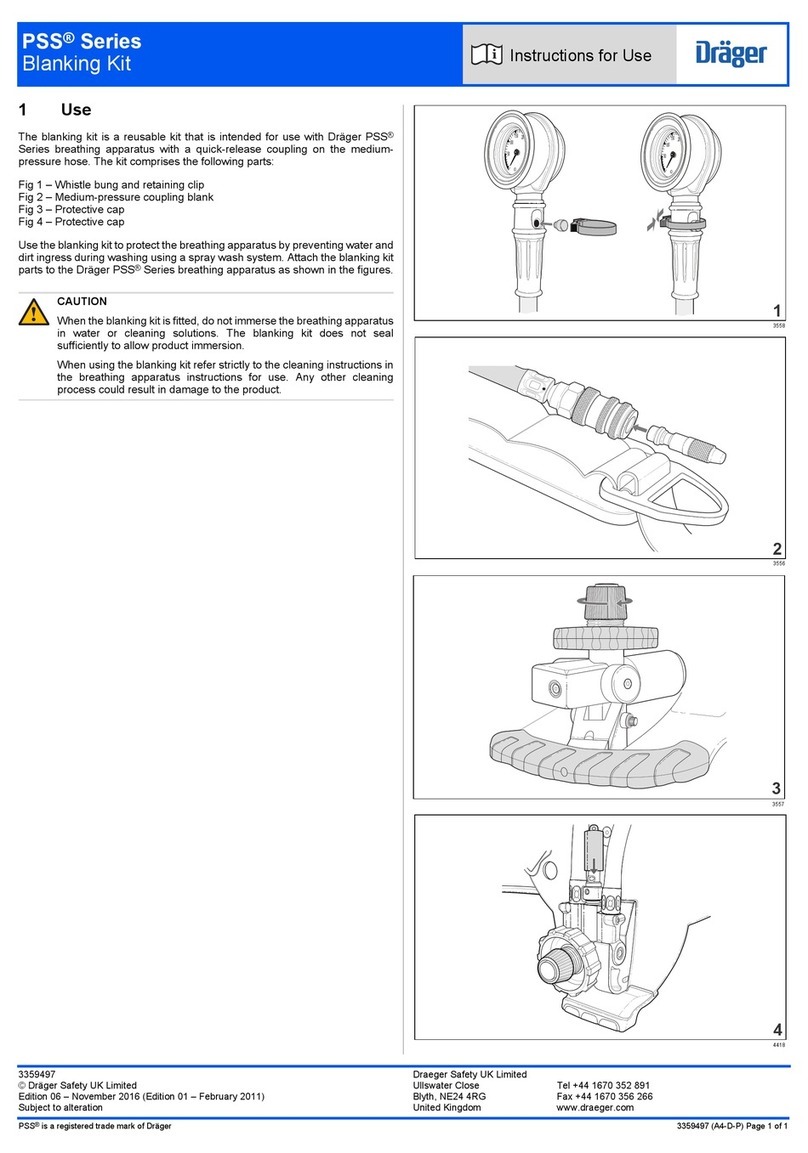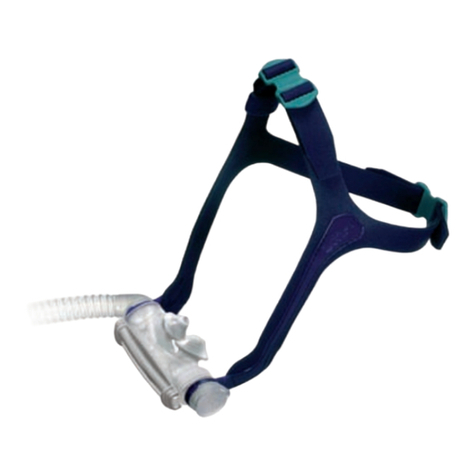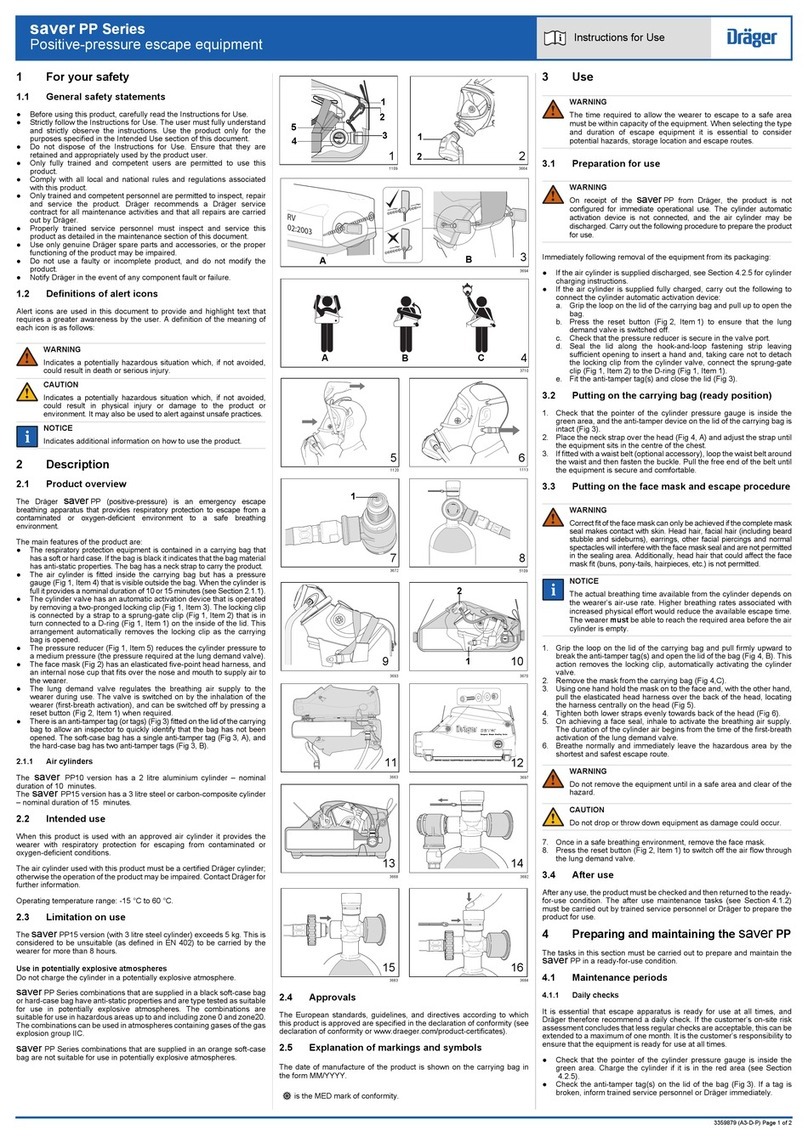
INTRODUCTION
NIOSH APPROVAL INFORMATION
CAUTIONS AND LIMITATIONS
I- Contains electrical parts which have not been evaluat-
ed as an ignition source in flammable or explosive
atmospheres by MSHA/NIOSH.
J- Failure to properly use and maintain this product could
result in injury or death.
M- All approved respirators shall be selected, fitted, used
and maintained in accordance with MSHA, OSHA and
other applicable regulations.
N- Never substitute, modify, add or omit parts. Use only
exact replacement parts in the configuration as speci-
fied by the manufacturer.
O- Refer to Users Instructions, and/or maintenance man-
uals for information on use and maintenance of these
respirators.
S- Special or critical User’s Instructions and/or specific
use limitations apply. Refer to user instructions before
donning.
CAUTIONS AND LIMITATIONS OF USE FOR CBRN
SCBA
Q- Use in conjunction with personal protective ensembles
that provide levels of protection against dermal haz-
ards.
R- Some CBRN agents may not present immediate
effects from exposure, but can result in delayed
impairment, illness, or death.
T- Direct contact with CBRN agents requires proper han-
dling of the SCBA after each use and between multi-
ple entries during the same use. Decontamination
and disposal procedures must be followed. If conta-
minated with liquid chemical warfare agents, dispose
of the SCBA after decontamination.
U- The respirator should not be used beyond 6 hours
after initial exposure to chemical warfare agents to
avoid possibility of agent permeation.
S - SPECIAL OR CRITICAL USER’S INSTRUCTIONS
1. Approved for use at temperatures above -25°F.
Approved only when the compressed-air container is
fully charged with air meeting the requirements of the
Compressed Gas Association Specification G-7 for
quality verification level (grade) D air or equivalent
specifications. The cylinder shall meet applicable DOT
specifications.
2. Do not alter this air mask. Altering will void the
Intrinsic-Safety rating and may affect the Intrinsic-
Safety of the device. Misuse or abuse of the heads-up
display system (FireHawk M7 Responder HUD),
FireHawk M7 Control Module, or FireHawk M7 Power
Module or using this equipment in a manner or situa-
tion not intended by the manufacturer, may result in
damage to the FireHawk M7 Responder HUD,
FireHawk M7 Control Module, or FireHawk M7 Power
Module, may result in personal injury or death to user
or persons dependent on the user. Always inspect the
FireHawk M7 Responder HUD for damage before use.
If damage is found, immediately remove the device
from service. The FireHawk M7 Responder HUD,
FireHawk M7 Control Module, and FireHawk M7
Power Module are approved intrinsically-safe and con-
form to UL/ANSI 913 for use in Class I, Div. I, Groups
C and D hazardous locations, temperature rating T3.
3. Use the air mask with adequate skin protection when
worn in gases and vapors that poison by skin absorp-
tion (for example: hydrocyanic-acid gas). In making
renewals or repairs, parts identical with those fur-
nished by the manufacturer under the pertinent
approval shall be maintained.
4. Approval for use against CBRN chemical warfare
agents is maintained only when using approved com-
ponents and following instructions listed on the
NIOSH approval supplement (P/N 10086012).
5. Do not mark the air mask, i.e., with stamps, labels,
paint, or other method. Use of such markings may
interfere with apparatus use or may constitute a flam-
mability hazard.
6. The mouth-bit can be inserted or removed from the
nosecup prior to use. See the “Preparing the
Respirator for Use” section for proper procedure.
2
TAL 803 (L) Rev. 1 - 10086011
TABLE OF CONTENTS
NIOSH Approval Information.............................................2
Special or Critical Users Instructions................................2
Instructions for Use and Care ...........................................5
Description ........................................................................7
Visual Inspection and Functional Tests ...........................11
Size Selection..................................................................15
Respirator Fit Test ...........................................................15
Preparing Respirator for Use...........................................17
Donning ...........................................................................19
Using the Air Mask ..........................................................23
Cold Weather Operation..................................................29
URC Assembly Operation ..............................................31
Hydration System............................................................33
Removing the Apparatus.................................................35
Cleaning and Disinfecting ...............................................39
Flow Test and Overhaul Requirements ..........................41
FireHawk M7 Telemetry Module......................................43
Accessories .....................................................................47
Quick-Fill®System Operation..........................................49
Extendaire™ System......................................................53
Lifetime Warranty.............................................................55

